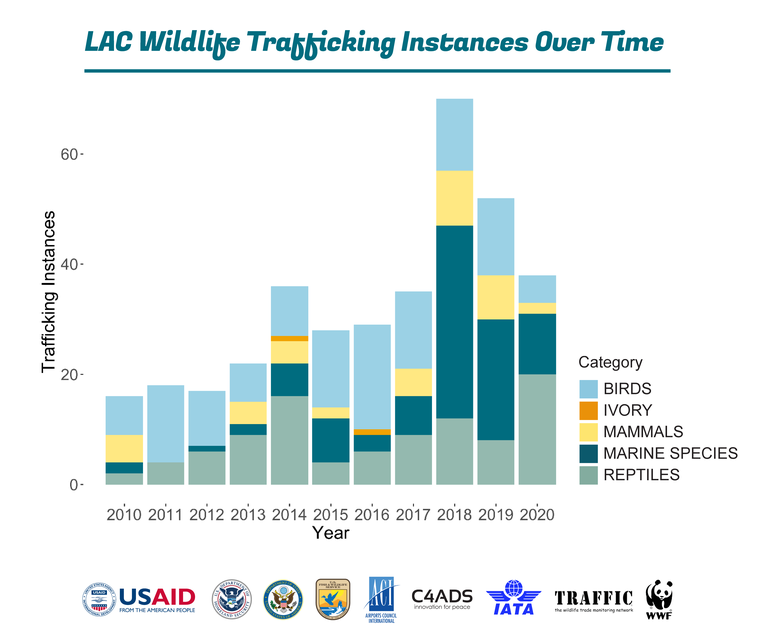Taking Off - Full Report
The Latin American and Caribbean (LAC) region holds over 40% of the world’s biodiversity, making it a rich target for exploitation by wildlife traffickers aiming to profit off selling illegal live wildlife or wildlife products. This illicit trade threatens not only the survival of the LAC region’s unique species, but also public health and international security. The number of known LAC region wildlife shipments in the air transit sector has grown in recent years, making up 22% of the total number of seizures recorded in the C4ADS Air Seizure Database in 2020.
Using this database, Taking Off report looks at the types of wildlife, routes taken and smuggling methods employed by wildlife traffickers in LAC between 2010 and 2020. Wildlife trafficking in the LAC region was tied to 53 countries globally between 2010 and 2020, and finches were the most commonly trafficked animal type, making up 33% of all bird seizures. Brazil, Colombia and Mexico has the highest numbers of wildlife trafficking instances and the report offers 'deep dives' examining trends specific to these three countries.

 ROUTES Taking Off Report.pdf
— 1786 KB
ROUTES Taking Off Report.pdf
— 1786 KB

